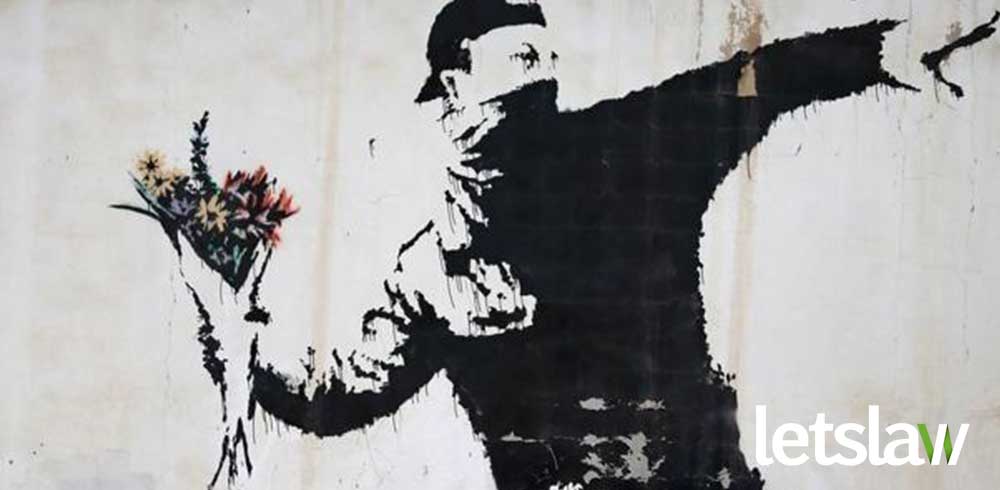
ANONYMITY AND COPYRIGHT
Banksy is the pseudonym behind which an anonymous British artist hides. He is one of the most famous and unknown artists while at the same time he is dedicated to street art with a vindictive background.
There are many theories that try to deduce who this artist is, but none comes close to reality. Until now everyone knows that the anonymous author who appears from time to time creating street art is Banksy, but at present his anonymity is harming him and causing a very complex situation.
Some time ago, the artist claimed his work “Flower Thrower” in the hope of getting the right to it, with the surprise of a negative answer from the European Union Intellectual Property Office Court which has ruled, “Banksy cannot claim the work as a trademark due to its anonymity”.
How do anonymous authors protect their works?
The Intellectual Property Law protects any original creation, born from the intellect, and grants its author a series of rights that safeguard such creation.
Although it is true, the present case of Banksy involves certain problems since it is an anonymous author. In this case, the law recognizes the authorship of the creation of anonymous works and allows other individuals and legal entities to exercise the copyright of such works, provided that the legal consent of the original author is obtained.
In order to obtain the protection of a piece under the author’s rights it is not necessary to carry out any procedure, but at the moment that the work is created it is understood that this safeguard of the original piece is activated.
Nevertheless, the above mentioned rights of exploitation of the work of a known author will last all the life of the author and 70 years after his death, as indicated in article 26 of the Law on Intellectual Property. The case of an anonymous author is more complex since the protection of the work is shorter, the term is the same but it starts counting from the date of creation of the work.
In accordance with Article 6 of the Law on Intellectual Property;
“When the work is disclosed anonymously or under a pseudonym or sign, the exercise of the intellectual property rights will correspond to the natural or legal person who brings it to light with the consent of the author, as long as the author does not reveal his identity”.
However, if the copyright of an unknown artist is infringed and he wants to exercise his rights before the Law without identifying himself, the Law foresees several ways, the simplest and most used way is to go to the Intellectual Property Registry and register the work anonymously. This request must include the details of the person who will hold the rights to the creation or a company can be set up or a web page can be created documenting all the works.
As a last option, make a legal deposit, in this case the creator himself or the person to whom he has assigned his rights meets with a notary and gives him a copy of the piece he has created.
Protection through branding
Trademark protection is another legal solution for anonymous authors to protect their creations. This solution offers additional protection to copyright and can lead to several benefits.
Copyrights have an expiration date, which makes them weak against trademarks, which can be kept forever, as long as they are used. In these cases the anonymity of the author is also safeguarded, since the owner of the trademark can be a company, as in the present case.
In this case, to register a trademark you must go to the office of patents and trademarks and register it, once you are granted such registration the author has a period of 5 years to start using the sign and therefore market their products.
Dispute between Bansky and EUIPO
The case of Banksy has given rise to several conflicts, among them the conflict with the EUIPO.
The origin of the litigation began in 2014 when the company representing the author Banksy, formalized a trademark application for one of his works “The Flower Thrower”. In this context, EUIPO granted such a request, but in 2019 a British company contradicted such a decision.
In relation to the above, the EUIPO annulled the mark for two reasons, the first reason being related to the fact that Banksy did not use the distinctive sign to market its products. The second reason, because the EUIPO considered that at the time of applying for registration there was bad faith, since Banksy never had any intention to exploit his creations.
In this sense, the controversy about the future of Banksy’s works is increasing; it is not known to what extent the rights of a street artist who paints anonymously can be recognized.

Letslaw es una firma de abogados internacionales especializada en el derecho de los negocios.







